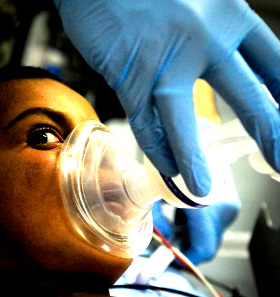Study wakes sleeping debate on anaesthetic mechanism
 Despite its widespread use, the actual mechanism by which general anaesthetic works has remained mysterious, but new research has shed a small amount of light on the common practice.
Despite its widespread use, the actual mechanism by which general anaesthetic works has remained mysterious, but new research has shed a small amount of light on the common practice.
The mystery of general anaesthetics may come as a surprise to the millions of people who inhale it each year.
A new report details investigations into the common anaesthetic ‘sevoflurane’.
Researchers found that it binds at multiple key cell membrane protein locations, which they believe may contribute to the induction of the anaesthetic response.
Their findings appear online in the Proceedings of the National Academy of Science.
Researchers found that sevoflurane's interaction with sodium channels (specialised protein conduits that open in response to certain stimuli) is essential in the generation of electrical impulses necessary for the communication between nerve cells in the brain.
A team from the University of Pennsylvania used molecular dynamic simulation, a 3-D computer modelling method, to visualise possible interactions of sevoflurane with discrete parts of the bacterial sodium channel.
The membrane protein is homologous to sodium channels found in human brain.
“Given the physical and chemical properties of inhaled anaesthetics, we expected binding to many possible sites; simulation, however, helped us limit and identify the sites where the binding of sevoflurane might actually change the function of the sodium channel,” said researcher Dr Annika Barber.
The team found three key binding sites possibly linked to the anaesthetic response.
The first involves the channel's sodium pore itself, which is plugged by sevoflurane; the second concerns the gate that governs opening and closing of the sodium channel in response to a voltage change across the membrane of a neuron; and the third surrounds a second gate that controls sodium flow by changing the shape of the channel's narrow pore.
These three sites, researchers hypothesise, work together to turn off firing of electrical impulses in key neurons and thus, induce the anaesthetic state.
Additionally, they found that low doses of sevoflurane made voltage-dependent activation of the sodium channel more favourable.
This surprising action could explain the excitement many patients experience during the onset of sevoflurane anesthesia.







 Print
Print